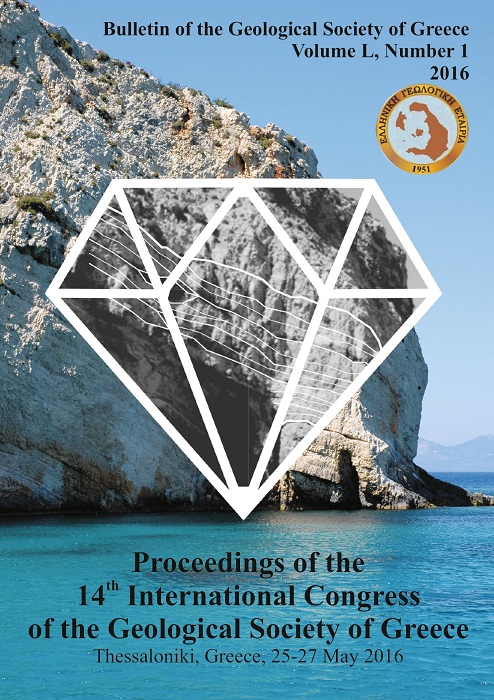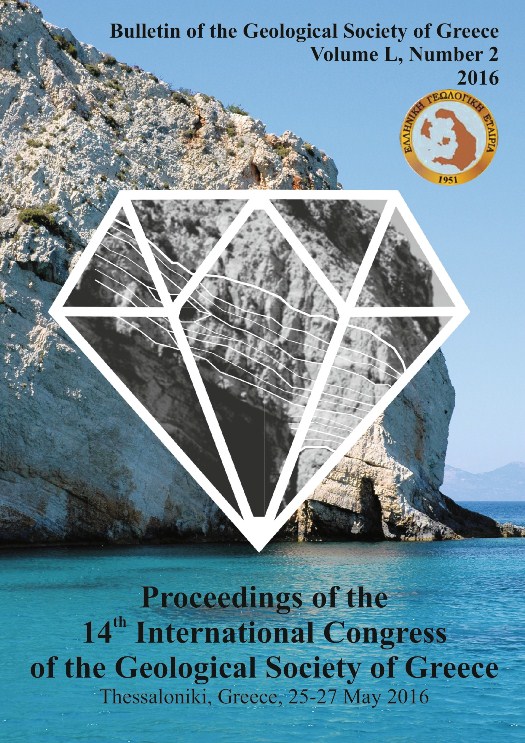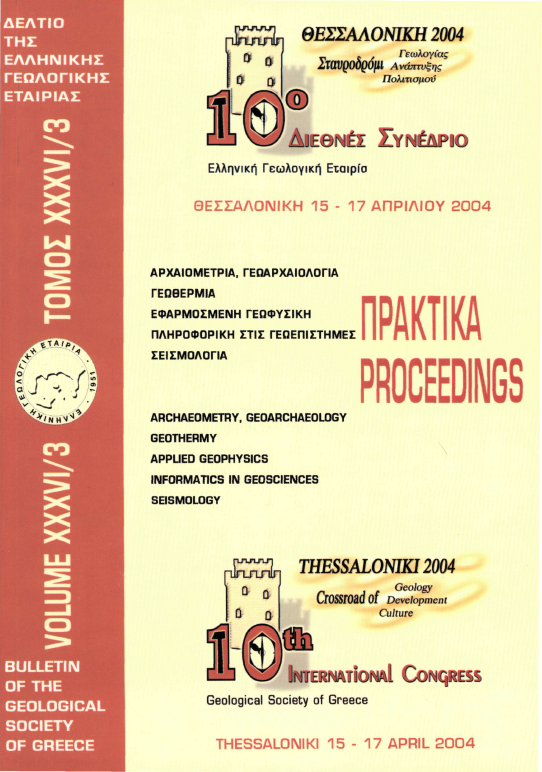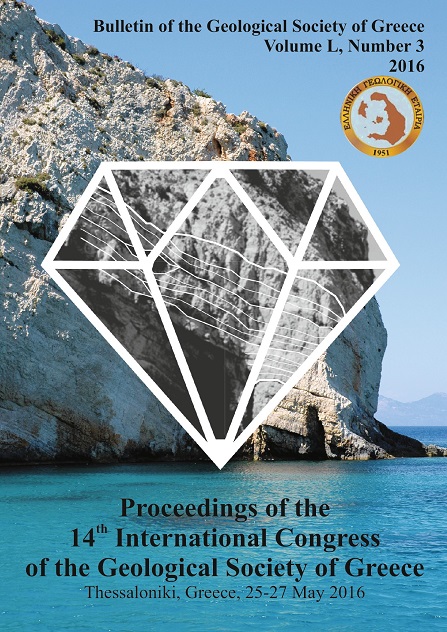Major tectonic structures in northeastern Greece deduced from geophysical and seismological data
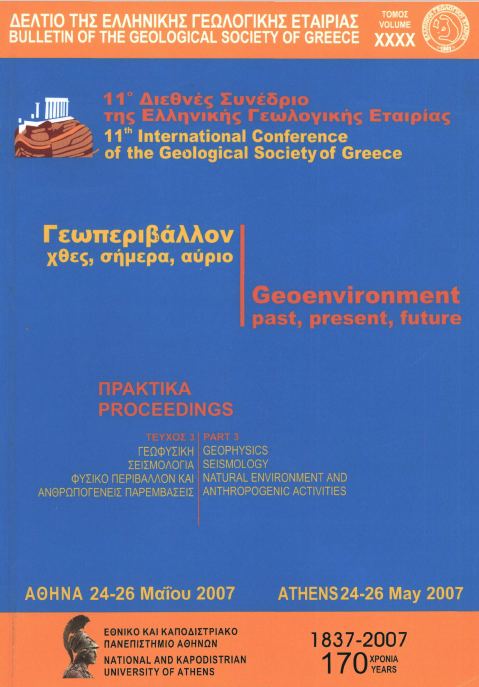
Περίληψη
Στην εργασία αυτή εφαρμόζουμε μεθόδους ανάλυσης γραμμικών στοιχείων στα βαρυτικά και μαγνητικά δεδομένα της ΒΑ Ελλάδας και συνδυάζουμε τα σεισμολογικά και γεωφυσικά δεδομένα προκειμένου να εντοπιστούν και να χαρτογραφηθούν τα σημαντικότερα τεκτονικά στοιχεία της περιοχής. Οι μέθοδοι αυτές χρησιμοποιούνται συχνά για την εξαγωγή των διαστάσεων και των φυσικών παραμέτρων των θαμμένων δομών που προκαλούν τις παρατηρούμενες ανωμαλίες στο βαρυτικό και μαγνητικό πεδίο της Γης. Αυτές οι εκτιμήσεις αφορούν τη θέση, το τοπικό βάθος, την παράταξη και την κλίση, καθώς και την αντίθεση της φυσικής ποσότητας, των επαφών των πηγών δυναμικών πεδίων. Χρησιμοποιήσαμε αποτελέσματα από προηγούμενες μελέτες προκειμένου να διορθώσουμε τα δεδομένα Bouguer από την επίδραση του φλοιού. Οι ισοστατικές υπoL·ιμμaτικές ανωμαλίες βαρύτητας, που δημιουργήθηκαν μετά την αφαίρεση της επίδρασης του φλοιού, σχετίζονται με επιφανειακές δομές. Μείωση του υψίσυχνου θορύβου στα δεδομένα επιτεύχθηκε με προς τα άνω συνέχεια τους. Η γεωλογική σημασία των γραμμώσεων που ανιχνεύτηκαν επαληθεύεται με συγκρίσεις με τη γνωστή γεωλογία, την ενεργό τεκτονική και σεισμικότητα καθώς επίσης και με την τοπογραφία.
Λεπτομέρειες άρθρου
- Πώς να δημιουργήσετε Αναφορές
-
Stampolidis, A., Tsokas, G., Kiratzi, A., & Pavlides, S. (2007). Major tectonic structures in northeastern Greece deduced from geophysical and seismological data. Δελτίο της Ελληνικής Γεωλογικής Εταιρείας, 40(3), 1279–1291. https://doi.org/10.12681/bgsg.16880
- Ενότητα
- Γεωφυσική και Σεισμολογία

Αυτή η εργασία είναι αδειοδοτημένη υπό το CC Αναφορά Δημιουργού – Μη Εμπορική Χρήση 4.0.
Οι συγγραφείς θα πρέπει να είναι σύμφωνοι με τα παρακάτω: Οι συγγραφείς των άρθρων που δημοσιεύονται στο περιοδικό διατηρούν τα δικαιώματα πνευματικής ιδιοκτησίας επί των άρθρων τους, δίνοντας στο περιοδικό το δικαίωμα της πρώτης δημοσίευσης. Άρθρα που δημοσιεύονται στο περιοδικό διατίθενται με άδεια Creative Commons 4.0 Non Commercial και σύμφωνα με την οποία μπορούν να χρησιμοποιούνται ελεύθερα, με αναφορά στο/στη συγγραφέα και στην πρώτη δημοσίευση για μη κερδοσκοπικούς σκοπούς. Οι συγγραφείς μπορούν να: Μοιραστούν — αντιγράψουν και αναδιανέμουν το υλικό με κάθε μέσο και τρόπο, Προσαρμόσουν — αναμείξουν, τροποποιήσουν και δημιουργήσουν πάνω στο υλικό.




